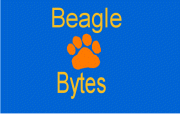Advanced Higher Mathematics
Course Overview
The course is based on :
Calculus, Algebra, proof and number theory, Matrices, vectors and complex numbers
An external SQA exam is sat at the end of the course, with calculator and non-calculator papers
Prerequisite Knowledge
You must have a good grasp of the following :
- Differentiation.
- Integration.
- Manipulating Vectors.
- Algebraic manipulation.
Alphabetical Listing of Topics
Binomial Theorem Complex Numbers Differentiation Differential Equations Functions Gaussian Elimination Integration Matrices Number Theory Partial Fractions Proof Sequences and Series VectorsAlgebra, Proof & Number Theory
Binomial Theorem
Key subskills
Expand expressions using the binomial theorem.
Functions
Key subskills
Finding the asymptotes of rational functions.
Investigating features of graphs and sketching graphs of functions,
including appropriate analysis of stationary points.
Number Theory
Key subskills
Using Euclid’s algorithm to find the greatest common divisor of two positive integers.
Partial Fractions
Key subskills
Expressing proper rational functions as a sum of partial fractions.
Proof
Key subskills
Disproving a conjecture by providing a counter-example.
Using direct and indirect proof in straightforward examples.
Sequences and Series
Key subskills
Finding the general term and summing arithmetic and geometric sequences.
Using the Maclaurin series expansion to find
a stated number of terms of the power series for a simple function.
Power Series
Application of summation formulae
Calculus
Differentiation
Key subskills
Differentiating functions given in the form of a product and in the form of a quotient.
Differentiating exponential and logarithmic functions.
Differentiating inverse trigonometric functions.
Finding the derivative of functions defined implicitly.
Finding the derivative of functions defined parametrically.
First Principles
Differentiation Refresher
Rules
Parametric Differentiation
Integration
Key subskills
Integrating expressions using standard results.
Integrating by substitution.
Integrating by parts.
Differential Equations
Key subskills
Solving a first order differential equation with variables separable.
Solving a first order linear differential equation using the integrating factor.
Solving second order differential equations.
Applying differentiation to problems, in context where appropriate.
Applying integration to problems, in context where appropriate.
Applications of Calculus
Matrices, vectors and complex numbers
Complex Numbers
Key subskills
Performing geometric operations on complex numbers
Matrices
Key subskills
Using Gaussian elimination to solve a 3x3 system of linear equations.
Performing matrix operations of addition, subtraction and multiplication.
Calculating the determinant of a matrix.
Finding the inverse of a matrix.
Matrices - Determinant
Matrices - Inverse
Special Matrices
Gaussian Elimination
Vectors
Key subskills
Calculating a vector product.
Finding the equation of a line in three dimensions.
Finding the equation of a plane.
Vector Product
Vector equations of lines
Vector equation of planes
